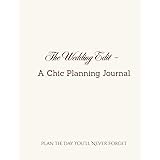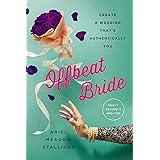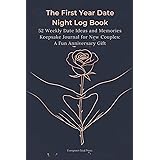Planning a wedding in the modern age often feels like navigating a sea of endless trends and expectations. It is easy to get caught up in every new idea presented on social media platforms. However, many elements couples meticulously plan often go unnoticed or unappreciated by their wedding guests, which can lead to unnecessary stress and significant budget overruns. The accompanying video offers a direct perspective on specific wedding details that guests generally overlook, providing valuable insights for couples aiming to prioritize their spending and focus on what truly matters for an enjoyable celebration.
Indeed, understanding what your guests genuinely value can simplify decision-making and alleviate the pressure to incorporate every popular trend. By strategically identifying areas where your efforts might not yield the expected guest appreciation, you can allocate resources more effectively. This allows you to invest in aspects that genuinely enhance the guest experience or hold profound personal meaning for you and your partner, without compromising the overall joy of your special day. Consequently, adopting this approach ensures your celebration reflects your desires rather than external pressures.
Rethinking Wedding Traditions: What Your Wedding Guests Don’t Care About
Couples frequently grapple with the extensive list of wedding day details, wondering which elements truly resonate with their attendees. Prioritizing guests’ experiences involves understanding that their focus often lies on comfort, good food, and a celebratory atmosphere. Conversely, elaborate or overly specific decor often fades into the background, regardless of the effort invested. We shall now delve into those specific wedding elements that rarely capture the attention of your guests.
Signature Drinks: Taste Over Theme
The concept of signature drinks, often named after pets, inside jokes, or shared memories, has become a popular wedding staple. While a personalized cocktail can add a unique touch, guests ultimately care more about the drink’s quality and availability than its clever moniker. They seek a refreshing beverage that is easily identifiable and delicious to consume. For instance, an overly complex or unusual drink might deter guests who prefer familiar options, irrespective of its charming name.
Many venues offer a standard bar package that includes beer, wine, and perhaps a selection of basic spirits. Incorporating one or two well-made, approachable signature cocktails within this framework can be a good compromise. However, avoid going “off the wall” with unique flavor combinations that might not appeal to a broad palate. Guests primarily desire a good, accessible drink rather than a thematic beverage with an obscure ingredient list, especially if it’s their only option for hard alcohol.
Dance Floor Frivolities: Guests Bring Their Own Fun
Couples often consider adding various props to the dance floor, such as glow sticks, funny glasses, or foam wands, believing these items enhance the party atmosphere. While such accessories can initially seem exciting, guests often disregard them, or they quickly become discarded clutter. Most attendees find joy in the music and the company of others; they do not require additional items to facilitate their enjoyment. Indeed, the true energy of a dance floor stems from the DJ or band and the enthusiasm of the crowd.
Instead of investing in disposable props, consider allocating those funds toward a more dynamic DJ or a captivating live band. Guests are perfectly capable of creating their own fun, often improvising with ties as headbands or simply engaging in spirited dancing. Furthermore, the environmental impact of single-use plastic props often outweighs their fleeting entertainment value. Therefore, prioritizing excellent music and a comfortable dancing space will yield a more positive and memorable experience for everyone involved.
Band vs. DJ: Assessing the Investment in Entertainment
The choice between a live band and a DJ is a significant decision for wedding entertainment, heavily impacting both atmosphere and budget. While a band certainly brings a unique energy and presence, offering a specific type of live performance, guests generally prioritize good music that keeps them dancing. The cost disparity between these options is substantial; a proficient DJ might start at approximately $1,000, whereas a multi-piece band can easily command $5,000 to $10,000 or more, with an eight-piece band potentially reaching $10,000 as noted in the video.
From a guest’s perspective, the primary concern is whether the music selection is enjoyable and danceable. A skilled DJ can transition seamlessly between genres and cater to diverse musical tastes, often at a fraction of the cost. While some cultures inherently expect a live band, for many modern weddings, a DJ offers sufficient entertainment. Consequently, unless a live band is a deep personal preference for the couple or a cultural imperative, opting for a DJ presents a financially sound alternative without diminishing guest enjoyment.
Outfit Changes: Focus on Personal Comfort and Presence
The trend of multiple outfit changes for the bride and groom throughout the wedding day has gained traction, often driven by social media aesthetics. However, guests rarely pay significant attention to these changes; their main focus remains on celebrating with the couple. Purchasing an entirely new outfit adds considerable expense and logistical complexity, requiring valuable time away from the celebration for wardrobe transitions. Guests are there to celebrate your union, not to witness a fashion show.
Furthermore, you have likely invested a substantial amount of money and effort into your primary wedding attire. Many couples desire to maximize their time wearing their carefully chosen gowns or suits. Therefore, if you genuinely wish to change, do so for your personal comfort or aesthetic preference, not out of a perceived obligation to entertain guests. Your presence and enjoyment throughout the event are far more memorable to attendees than a second ensemble.
Bathroom Baskets: Hygiene Concerns and Minimal Usage
Bathroom baskets, filled with toiletries such as hairspray, bobby pins, breath mints, and even communal deodorant, are intended to provide convenience for guests needing a quick touch-up. However, these baskets frequently go largely untouched, with guests typically carrying their own essential items. The concept of communal personal hygiene products also raises legitimate sanitary concerns for many attendees, making them hesitant to use items like shared deodorant. This leads to a considerable portion of the basket’s contents remaining unused.
These baskets represent an unnecessary expenditure that contributes little to the overall guest experience. Should a guest genuinely require an emergency item, they are more likely to ask a friend or a member of the wedding party. Couples might consider a small, discreet offering of individually wrapped breath mints or pain relievers if they feel compelled to provide something. However, the elaborate bathroom basket trend is largely a superfluous detail that offers minimal return on investment, and guests will not miss its absence.
Branded Weddings: Subtle Touches vs. Over-The-Top Cohesion
A branded wedding, characterized by a cohesive aesthetic achieved through consistent fonts, color schemes, and design elements across all stationery and decor, appeals greatly to design-conscious couples. This attention to detail creates a visually harmonious experience that reflects the couple’s style. Nevertheless, most wedding guests, including older relatives, rarely notice or appreciate the intricate continuity of a specific font or a subtle color palette shift from the save-the-date to the reception signage. Their primary engagement is with the overall ambiance rather than individual design nuances.
While establishing a cohesive visual identity is satisfying for the couple, it is crucial to understand that excessive investment in branded minutiae often goes unremarked. Guests are unlikely to critique inconsistencies between your invitation and your wedding website. Focus on key visual elements that make a strong, immediate impact, such as stunning floral arrangements or ambient lighting. Allocate resources to these more prominent features rather than spending excessively on subtle branding details that only a few will consciously recognize.
Open Bar Expectations: Nuances of Beverage Service
The expectation of an open bar at a wedding varies significantly by culture and region; what is considered standard in one area might be an extravagance in another. While an open bar is often seen as the epitome of hospitality, it also represents one of the most substantial wedding expenses, potentially adding $5,000 to $10,000 to the total cost. Most guests are perfectly content with a more limited bar offering, such as complimentary beer and wine, especially if it is readily available and flows generously. Guests generally prioritize having *something* to drink over having *every* option.
Consider various alternatives to a full open bar to manage costs effectively. Options include a hosted beer and wine bar, a beer, wine, and signature cocktail arrangement, or a hybrid where beer and wine are hosted with a cash bar for spirits. Some couples even offer a limited “host hour” for all drinks before transitioning to a cash bar. Responsible hosting means ensuring adequate hydration and non-alcoholic options are always available. Ultimately, guests value a thoughtful provision of beverages rather than an unlimited selection of premium spirits, making more conservative bar choices entirely acceptable and often preferred for budget management.
Wedding Hashtags: Outdated Engagement Tactics
Wedding hashtags, once a popular tool for collecting guest photos on social media, have largely become an outdated engagement tactic. While the idea of scrolling through a curated feed of guest-captured moments is appealing, the reality is that very few guests consistently remember or bother to use a specific hashtag. Social media usage patterns have evolved, and the effort required to post with a hashtag often outweighs the perceived benefit for attendees. Consequently, expecting a high return on investment for a wedding hashtag is often unrealistic.
To effectively collect memories from your guests, explore more interactive and direct methods. Consider setting up a photo scavenger hunt, where guests are given a list of specific photos to capture and upload to a shared album or dedicated photo-sharing app. Alternatively, providing disposable cameras at each table can encourage candid shots and create a tangible collection of memories. These approaches foster greater guest participation than a simple hashtag, offering a more reliable means of gathering unique perspectives from your special day.
Miscellaneous Decor: The Card Box Conundrum
The card box, intended as a secure and aesthetically pleasing receptacle for wedding cards and gifts, often becomes another item couples meticulously design. Whether it is a rustic wooden crate, an elegant birdcage, or a personalized container, significant effort can go into its selection. However, guests primarily view the card box as a functional item; their main concern is simply finding a safe and obvious place to deposit their card. The intricate details or theme integration of the box itself rarely register as a memorable feature.
While a card box serves an important function, its elaborate design contributes minimally to the guest experience. Consider a simple yet elegant solution that clearly indicates its purpose, such as a tastefully decorated box that complements your overall decor without being a major focal point. Guests are more concerned with properly conveying their well-wishes and gifts than appreciating the artistic merit of the receptacle. Therefore, prioritize practicality and security over an expensive or overly decorative card box.
Floral Arrangements: Cost vs. Perceived Value
Floral arrangements are often a substantial component of a wedding budget, with florists frequently requiring minimum spends of $2,500 or more. While fresh flowers undeniably add beauty and fragrance, guests generally appreciate the overall aesthetic of a well-decorated space rather than focusing on the specifics of each bloom. They notice if a table appears bare, but the type, size, or cost of the centerpiece often goes unremarked. A centerpiece valued at $65 to $100 per table might be stunning, yet its individual cost is often lost on attendees.
For couples seeking to reduce floral expenditures, numerous beautiful and cost-effective alternatives exist. Consider incorporating lush greenery, elegant candles, decorative lanterns, or even unique non-floral elements like books, vintage bottles, or potted plants. These options can create an equally inviting and aesthetically pleasing atmosphere without the high price tag of elaborate fresh arrangements. While you may adore flowers, guests prioritize a cohesive and warm ambiance over specific floral varieties, providing a justifiable reason to explore alternative centerpiece ideas.
Personalized Items: Customization Overlooked by Guests
The trend of personalizing various wedding items with the couple’s names, wedding date, or custom logos, such as cocktail napkins, disposable cups, and favors, has become widespread. This customization is intended to add a unique touch and reinforce the couple’s brand. Nevertheless, guests rarely notice these small personalized details; they are more concerned with the functionality and quality of the item itself. A guest receiving a drink on a plain napkin, for example, will not suddenly refuse it because it lacks personalized branding. The cost of such customization often goes largely unappreciated by the average attendee, as it adds no functional value.
Instead of investing in personalized cocktail napkins or disposable cups, consider how those funds could enhance a more impactful aspect of the guest experience, such as upgrading a food station or extending the bar service. Guests prioritize enjoyable food, drink, and entertainment over branded merchandise that often gets discarded. Furthermore, these personalized items can contribute to unnecessary waste. Opt for quality over branding on practical items, allowing your guests to focus on the celebration itself rather than the small print.
Children’s Antics: Endearing Moments, Not Distractions
Couples often worry extensively about their young flower girls or ring bearers misbehaving during the ceremony, fearing it will disrupt the solemnity of the event. However, guests typically have very low expectations for children’s behavior in formal settings. Minor missteps, such as walking backward, getting distracted, or dropping petals haphazardly, are almost universally seen as endearing and memorable moments rather than genuine disruptions. These unexpected actions often elicit smiles and laughter, adding a touch of charm to the ceremony.
Unless a child throws a full-blown tantrum, which is exceedingly rare in this context, any deviation from perfect aisle behavior is completely acceptable. Guests understand that children are unpredictable, and their presence often adds a sweet, lighthearted element to the proceedings. The focus remains on the couple and the significance of the vows, with any childish antics serving as a delightful, fleeting interlude. Therefore, couples should relax about the performance of their young attendants and embrace these potential moments of authentic spontaneity.
Lengthy Speeches: The Attention Bank Depletion
While speeches from loved ones are a cherished tradition, excessive length or too many speakers can quickly deplete guests’ “attention bank.” Attendees are already processing numerous elements of the wedding day, from the ceremony to cocktail hour. Consequently, prolonged periods of listening to speeches, especially those filled with inside jokes or personal anecdotes unknown to the wider audience, can lead to disengagement and restlessness. Guests are present to celebrate, eat, and dance; they prefer concise and heartfelt messages over lengthy monologues.
To maintain guest engagement, it is advisable to limit the number of speakers and encourage each speaker to keep their remarks brief, ideally within 3-5 minutes. Consider moving some speeches, particularly those from a larger group of individuals, to the rehearsal dinner the evening before. This allows for more intimate and extended toasts without monopolizing valuable reception time. Ensuring timely service of food and maintaining a lively entertainment flow is paramount, as guests appreciate being fed, entertained, and having ample opportunity to socialize and dance, rather than enduring an extended series of potentially awkward or unengaging speeches. Furthermore, tools like Provonance can assist speakers in crafting impactful yet succinct messages, making the experience more enjoyable for everyone involved. Indeed, your wedding guests don’t care about enduring an endless parade of monologues; they prefer to celebrate with you.











